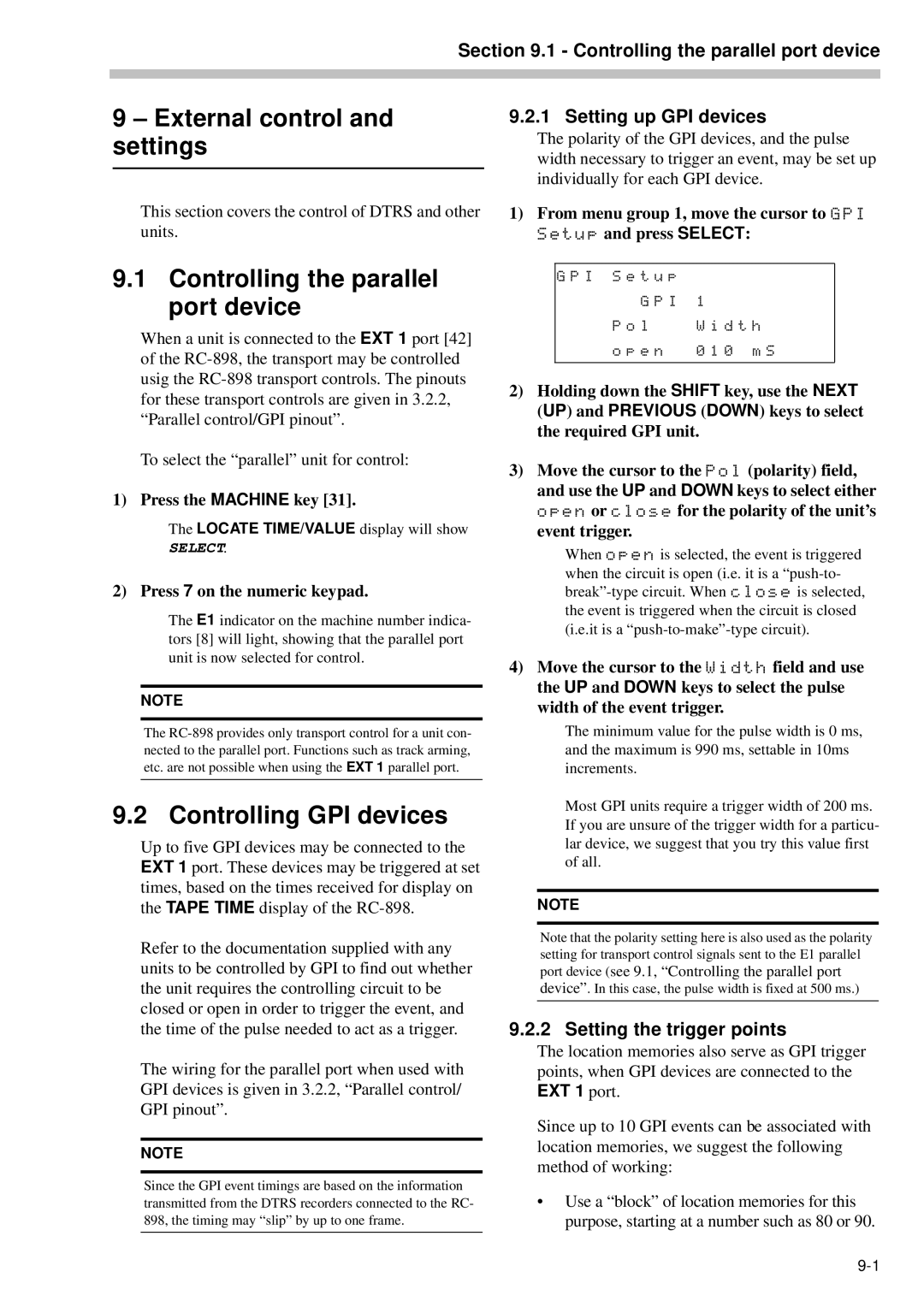
Section 9.1 - Controlling the parallel port device
9 – External control and settings
This section covers the control of DTRS and other units.
9.1Controlling the parallel port device
When a unit is connected to the EXT 1 port [42] of the
To select the “parallel” unit for control:
1) Press the MACHINE key [31].
The LOCATE TIME/VALUE display will show
SELECT.
2) Press 7 on the numeric keypad.
The E1 indicator on the machine number indica- tors [8] will light, showing that the parallel port unit is now selected for control.
NOTE
The
9.2 Controlling GPI devices
Up to five GPI devices may be connected to the EXT 1 port. These devices may be triggered at set times, based on the times received for display on the TAPE TIME display of the
Refer to the documentation supplied with any units to be controlled by GPI to find out whether the unit requires the controlling circuit to be closed or open in order to trigger the event, and the time of the pulse needed to act as a trigger.
The wiring for the parallel port when used with GPI devices is given in 3.2.2, “Parallel control/ GPI pinout”.
NOTE
Since the GPI event timings are based on the information transmitted from the DTRS recorders connected to the RC- 898, the timing may “slip” by up to one frame.
9.2.1 Setting up GPI devices
The polarity of the GPI devices, and the pulse width necessary to trigger an event, may be set up individually for each GPI device.
1)From menu group 1, move the cursor to GPI Setup and press SELECT:
G P I S e t u p |
|
G P I | 1 |
P o l | W i d t h |
o p e n | 0 1 0 m S |
|
|
2)Holding down the SHIFT key, use the NEXT (UP) and PREVIOUS (DOWN) keys to select the required GPI unit.
3)Move the cursor to the Pol (polarity) field, and use the UP and DOWN keys to select either open or close for the polarity of the unit’s event trigger.
When open is selected, the event is triggered when the circuit is open (i.e. it is a
4)Move the cursor to the Width field and use the UP and DOWN keys to select the pulse width of the event trigger.
The minimum value for the pulse width is 0 ms, and the maximum is 990 ms, settable in 10ms increments.
Most GPI units require a trigger width of 200 ms. If you are unsure of the trigger width for a particu- lar device, we suggest that you try this value first of all.
NOTE
Note that the polarity setting here is also used as the polarity setting for transport control signals sent to the E1 parallel port device (see 9.1, “Controlling the parallel port device” . In this case, the pulse width is fixed at 500 ms.)
9.2.2 Setting the trigger points
The location memories also serve as GPI trigger points, when GPI devices are connected to the EXT 1 port.
Since up to 10 GPI events can be associated with location memories, we suggest the following method of working:
•Use a “block” of location memories for this purpose, starting at a number such as 80 or 90.
